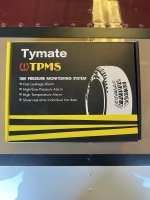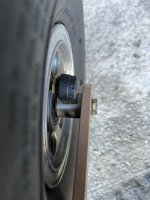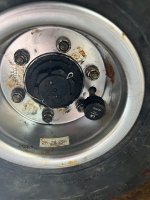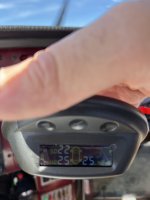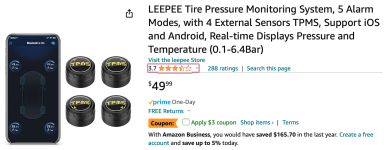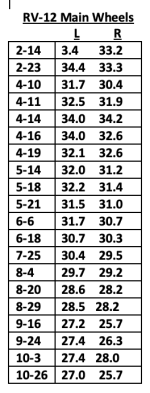I wanted to update the group on my additional experience with the Tymate TPMS system.
The initial installation went well. But my additional experience didn't go well and I have stopped using it.
The Tymate TPMS system sensors that attach to the stem of the inner tube go to "sleep" after they no longer sense vibration / wheel motion to allow the batteries in these sensors last longer. Upon sensing vibration / wheel motion again, the sensors are to "wake up" and transmit to the Tymate receiver again. When the sensors go to "sleep" the display continues to show the last reading that it has received. Fortunately, these sensors transmit the measured pressure and temperature at each wheel. Since the displayed pressure is shown as a whole number and the sensor accuracy is only +/- 1.5 psi, it would require a significant pressure change for the displayed pressure to change. But, a temperature change is easier to measure and thus, could be used as check on whether the sensor has "woken up" and transmitted a new update.
The issue that I had was getting the sensors to "wake up" after the airplane sat overnight. Think of it as wanting to know what the tire pressure is when one performs a preflight inspection. One of the sensors consistently "woke up" quickly and I was very pleased with it. Unfortunately, the other two sensors "woke up" slowly or not at all. To get these two sensors to "wake up" I rolled the airplane in and out of the hangar, tapped on the sensors and tapped on the wheels without success.
I contacted Tymate to get assistance with resolving this. Tymate requested that I remove the sensors and rematch each sensor to the display. Unfortunately, this didn't resolve the issue. The one sensor still "woke up" quickly and the other two sensors were slow or didn't reconnect. Turning the display off and restarting it didn't help either. After more emails, Tymate offered to send a replacement unit after I returned my unit to them. By now I had lost faith the Tymate TPMS could be trusted to consistently report the wheel pressures and I elected to return it locally to Amazon and was refunded my money that day.
I would still like to get a TPMS system that could measure the pressure in all three tires. I'll keep looking and I am to suggestions.
Brett



